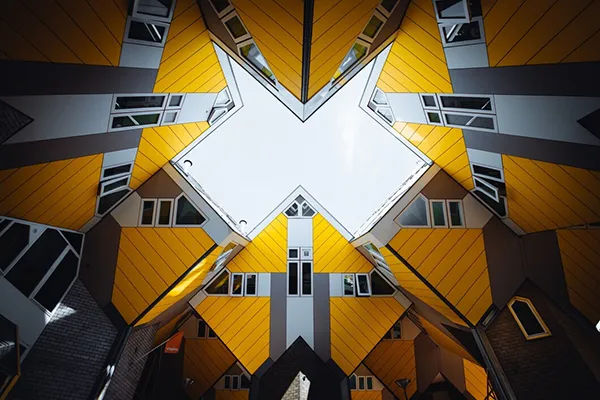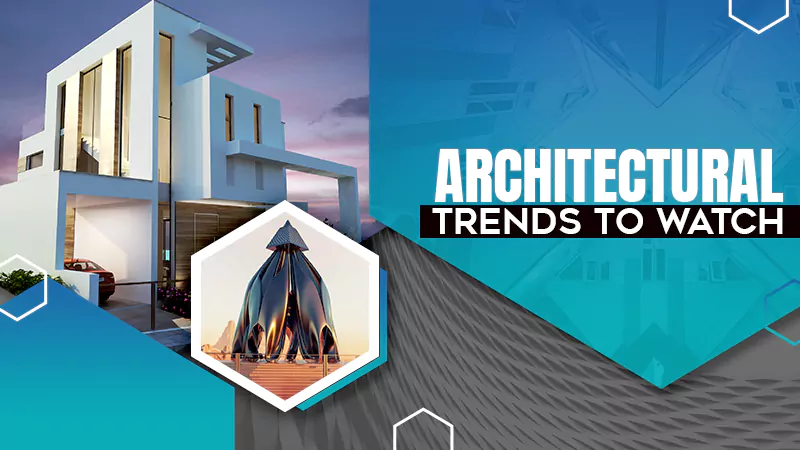In the ever-evolving realm of architecture, staying ahead of the curve is paramount. As we approach 2024, architects and designers are poised to embrace innovative movements that will shape the built environment. Anticipating architectural trends is not just about keeping pace; it’s about envisioning and influencing the future.
In this insightful exploration, we’ll delve into six key movements and innovations that are set to define architectural landscapes in 2024.

Biophilic Design: Bringing Nature Indoors
Biophilic design, which emphasizes the integration of natural elements into built environments, is set to flourish in 2024. Architects are increasingly drawn to the idea of integrating nature into indoor spaces, creating environments that seamlessly blend the constructed surroundings with the organic world.
So, watch out for a rise in indoor gardens, living walls, and creative use of materials that mirror the textures and patterns found in nature. This trend doesn’t just make things look good. The addition of green to indoor spaces is known for promoting well-being and fostering a deeper connection to the environment.
Technological Integration: Smart Cities and Responsive Architecture
As technology advances at a rapid pace, it significantly shapes our daily routines, sometimes to astonishing degrees. This impact is notably felt in the field of architecture. When we peer into the future, specifically 2024, we can anticipate a seamless integration of technology that goes beyond smart homes.
This integration will extend its influence to smart cities and responsive architectural designs. In this future landscape, buildings will incorporate sophisticated systems tailored to meet the needs of occupants, aiming to optimize energy consumption and overall efficiency.
The integration of Internet of Things (IoT) devices and artificial intelligence, down to the choice of the right Ethernet cables and sustainable technologies will pave the way for a new era of intelligent and interconnected urban spaces.
Sustainable Design Integration: A Holistic Approach
Sustainability is not just a buzzword; it’s a guiding principle that continues to gain momentum in architectural circles. In 2024, we anticipate a surge in sustainable design integration, with architects adopting a holistic approach that goes beyond energy efficiency. All these efforts will be carried out by the latest BIM and design tools so the architects that want to be a part of this movement will need to learn how to use Rhino and other similar tools.
But, ultimately, buildings will be designed to minimize environmental impact, utilizing recycled materials, green roofs, and advanced technologies to create structures that coexist harmoniously with their surroundings. Sustainability will no longer be an option but a fundamental element ingrained in the DNA of architectural projects.

Adaptive Reuse: Repurposing Spaces for Sustainability
As a nod to sustainable practices and a response to the ever-increasing need for space, adaptive reuse will continue to gain prominence in 2024. Architects will creatively repurpose existing structures, breathing new life into old buildings. This trend aligns with the ethos of sustainability, reducing the environmental impact of construction while preserving the cultural and historical significance of older structures. Expect to see warehouses transformed into creative hubs, and industrial spaces converted into modern residences.
Inclusive Design: Creating Spaces for All
In 2024, inclusivity will be at the forefront of architectural design. Inclusive design goes way beyond just ticking off accessibility checkboxes. It’s about crafting spaces that genuinely cater to the diverse needs of everyone, regardless of age, ability, or background. Architects are leaning towards designs that embrace universal accessibility, making sure that public spaces, commercial buildings, and homes are not just functional but also welcoming for everyone.
This shift towards inclusive design reflects a growing awareness of the importance of diversity and equality in shaping the built environment. The goal of modern architecture is not only to push building and environmental boundaries but humans as well.
Parametric Architecture: Sculpting with Algorithms
Parametric architecture, characterized by the use of algorithms to generate complex, dynamic forms, is set to make waves in 2024. This innovative approach allows architects to create intricate designs that respond to specific parameters and environmental conditions. Expect to see buildings with fluid shapes and intricate facades that are not just visually stunning but also optimized for performance. Parametric architecture represents a departure from traditional design methods, offering architects a whole slew of new venues to explore and push their creativity to eleven.
Conclusion: Shaping Tomorrow’s Skylines Today
As we step into 2024, the world of architecture is gearing up for some exciting shifts. Sustainable design, bringing nature into our spaces, technological leaps, repurposing old structures, creating inclusive designs, and diving into parametric architecture—these aren’t just passing trends. They’re significant movements set to redefine how we live in and engage with our surroundings.
The good thing to take out of this situation is that the future of architecture is not merely anticipated; it’s actively envisioned and crafted by those at the forefront of these architectural waves.
